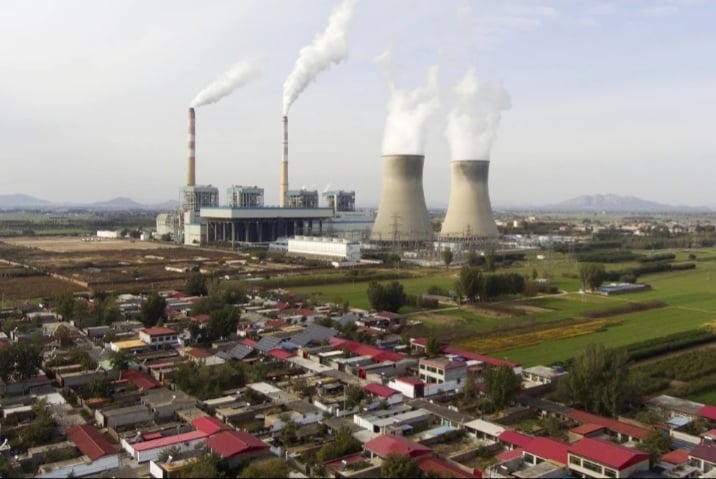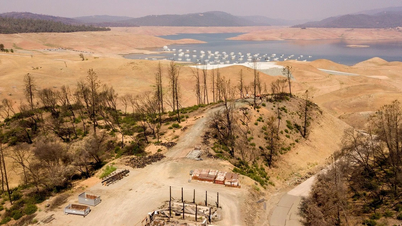The information was reported on December 5 at COP28, where global officials are trying to cut emissions by 43% by 2030. According to the Global Carbon Project, CO2 levels are continuing to increase with 36.8 billion tons of emissions in the air in 2023, double the level of 40 years ago.

Guohua coal-fired power plant in Dingzhou, Baoding, Hebei province, northern China. AP photo.
“It now seems inevitable that we will exceed the 1.5C threshold set in the Paris Agreement, and leaders meeting at COP28 will have to agree to rapidly cut fossil fuel emissions even to stay within 2C,” said lead author Pierre Friedlingstein of the University of Exeter.
Jim Skea, chair of the Intergovernmental Panel on Climate Change, said limiting global warming to 1.5 degrees was “possible” but only moderately and with large emissions cuts. “It’s clear we’re not on track,” Friedlingstein said.
According to the report, the amount of CO2 emissions released into the atmosphere every second is up to 1.17 million kg due to the burning of fossil fuels and cement production.
According to Mr. Friedlingstein, if emissions from China and India are excluded, CO2 from fossil fuel burning and cement production in the world will decrease significantly. Global CO2 emissions in 2023 increased to 398 million tons, mainly from China, India and the aviation industry.
China's fossil fuel emissions rose by 458 million tonnes year-on-year, India's by 233 million tonnes and aviation emissions by 145 million tonnes.
However, world fossil fuel emissions (excluding China and India) fell by 419 million tonnes, led by a 205 million tonnes reduction in Europe and a 154 million tonnes reduction in the US.
The report said Europe's 8% drop was due to lower emissions from coal, oil, gas and cement. The decline in the US was mainly due to reduced coal burning, while oil and gas emissions increased slightly.
In 2022, carbon emissions are set to rise globally but fall in China due to the impact of Covid-19 pandemic restrictions. This year, China's 4% surge in emissions is similar to the post-pandemic recovery in the rest of the world in 2022.
The world needs to reach net-zero fossil fuel emissions “as quickly as possible”, with developed nations achieving the target by 2040, developing nations by 2050 or at least 2060, UN Environment Programme chief Inger Andersen said.
Hoai Phuong (according to AP)
Source



![[Photo] President of the Cuban National Assembly visits President Ho Chi Minh's Mausoleum](https://vphoto.vietnam.vn/thumb/1200x675/vietnam/resource/IMAGE/2025/10/1/39f1142310fc4dae9e3de4fcc9ac2ed0)
![[Photo] Hanoi morning of October 1: Prolonged flooding, people wade to work](https://vphoto.vietnam.vn/thumb/1200x675/vietnam/resource/IMAGE/2025/10/1/189be28938e3493fa26b2938efa2059e)
![[Photo] Keep your warehouse safe in all situations](https://vphoto.vietnam.vn/thumb/1200x675/vietnam/resource/IMAGE/2025/10/1/3eb4eceafe68497989865e7faa4e4d0e)






























































































Comment (0)